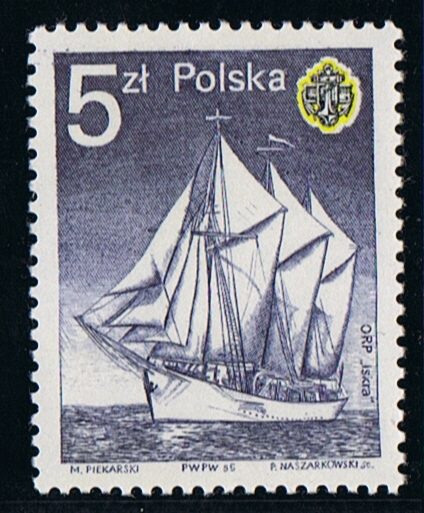
Built as a steel 3 mast topsail schooner-rigged vessel by G.Muller at Foxhol, Netherlands for Nederlandse Zeevaart Maatschappij (Kramer), Groningen, Netherlands.
19 June 1917 launched under the name VLISSINGEN, most probably named after the Dutch town Vlissingen (Flushing).
Tonnage 348 grt., dim. 52.0 x 7.80 x 3.60m. (draught).
Auxiliary, one 2-cyl. two stroke oil engine.
1917 Delivered to owners, with homeport Groningen.
Used as a coastal cargo vessel in the northern coastal and inland waters.
After World War I regular used in the trade to London and the U.K. south coast ports.
1925 Sold to N.V. Vereenigde Groningsche Scheepsbouwwerven, Groningen. (Most probably traded in for a newbuilding.)
1925 Sold to A Kennedy & Sons, Glasgow, renamed ST BLANCE.
Used by him on the east coast-continental run.
1926 She appears in the missing list, when she for two days went missing on a voyage in ballast from Grangemouth to Hull.
1926 Sold to the Polish Government and after a conversion on a Polish yard renamed in ISKRA (spark) and managed by the Polish Navy as a training vessel for the Gdynia Naval School.
For the accommodation of the cadets two deckhouses were added.
She got a new Ursus-Nohab diesel, 260 hp., when fitted in I could not find.
February 1928 completed. Sail area 680 m³.
Before World War II she made regular overseas trainings cruises.
When in 1939 war broke out between Poland and Germany was she off the North African coast and berthed in a Morocco port. She stayed there with only two men on board for her upkeep, while the rest joined the Free Polish forces in French and England.
After the surrender of French, the ISKRA sailed to Gibraltar to prevent that she was falling in enemy hands.
At Gibraltar was she taken over by the British authorities, used under the name HMS ISKRA as an accommodation ship by the Coastal Forces Base at Gibraltar.
With her topmasts down on deck, she served the British forces throughout the war.
After the war some renovation was made at Gibraltar and Portsmouth before she was handed back to Poland.
Thereafter again in use as a sailing trainings vessel for the Polish Navy, with a total of crew and cadets of around 55 – 60 men.
31 December 1977 stricken from the Polish Navy list.
Circa 1980 broken up.
Poland 1985 5z sg 3000, scott 2688.
Source: Blauwe Wimpel 1984 pp 66. Zeilende Opleidingsschepen by H Hacquebord. Sail Training and Cadets Ships by H. A. Underhill. De Laatste Grote Zeilschepen by Schauffelen.
